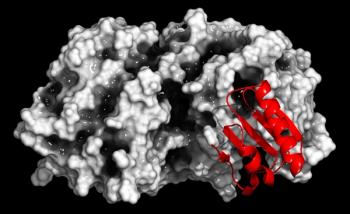
Lack of Insurance Associated With Lower Odds of Interfacility Transfer in Patients With Myocardial Infarction
Patients with ST-segment elevation myocardial infarction who are uninsured were not found to be transferred between facilities at a higher rate than insured patients, and the amount of transfers were instead based more on the capability of a facility to provide percutaneous coronary intervention in a timely fashion.
Uninsured patients with ST-segment elevation myocardial infarction (STEMI) had lower odds of interfacility transfer compared to patients with insurance in California, a new study published in the Journal of the American Medical Association shows.
More so than insurance status, the rate of interfacility transfer was dependent on the ability of an emergency facility to provide primary percutaneous coronary intervention (PCI), which is the standard treatment for those with STEMI if they can be transferred in a timely fashion, usually within 120 minutes, the researchers noted.
“In this cohort study, we found that the transfer of patients with a time-sensitive emergency, STEMI, is highly dependent on the characteristics of the facility to which the patient initially presents,” the investigators wrote.
The study evaluated a population of 135,358 STEMI hospitalizations, with 32,841 patients (24.2%) being transferred. Among the transferred patients, 2150 (6.6%) were uninsured. The proportion of transferred uninsured patients was slightly higher than the insured groups (2150 of 7322 patients [29.4] vs. 30,691 of 128,036 [24.0%]), the investigators wrote.
Prior to adding controls, uninsured patients with STEMI were 1.32 (95% CI, 1.25-1.39; P < .001) times higher to be transferred than insured patients with STEMI in California hospitals, the study shows. However, once controls for the characteristics of the transferring hospital were taken into account, the odds of transfer for uninsured patients were lower than the odds of transfer for insured patients (aOR 0.93; 95% CI, 0.88-0.98; P = .01), the researchers wrote.
After analyzing the results, the researchers found that in California—a state in which a highly regionalized STEMI network exists—there were decreased odds of uninsured patients being transferred when considering PCI capabilities of the transferring facilities.
In fact, when adjusting for a facilities PCI capability, the odds of transfer became significantly higher for patients with STEMI who did have insurance compared to those without, the study says.
“Our findings suggest that the facility’s characteristics, specifically PCI capabilities, are the primary factor associated with our current findings that uninsured patients had lower odds of transfer compared with their insured patients,” the researchers wrote.
The investigators made sure to note that although the results of the study show that uninsured patients did not have a higher rate of transfer than insured patients, that does not mean the uninsured “consistently receive the highest quality care.” In a preliminary analysis that the researchers say needs more investigation, they found uninsured patients were more likely to reach a medical facility that did not have PCI capability.
Despite this, they also found uninsured patients had higher odds of being transferred out of a facility with low PCI volume or capability, and thus had a larger chance of receiving high quality care. Limitations of the study were present, including the inability to analyze situational or clinical factors at the time of a patient being admitted, such as the workload of the facility, the type of myocardial infarction, and the actual PCI capabilities of the referring facilities at the time of transfer, the researchers stated.
The study also does not include how timely the transfers were—an important factor due to the time-sensitive nature of a STEMI emergency—or the clinical outcomes for the patients that were transferred.
Insurance status has been seen as impacting whether to transfer a patient or not in an emergency setting, despite legislation that would prohibit such considerations. The researchers set out to determine whether—particularly in patients with STEMI—this trend continued or was more based on patients being admitted to facilities that didn’t have the resources to treat them and, as a result, are transferred.
“Further work is needed to understand the generalizability of these findings and whether access to high-quality care remains an important barrier for uninsured patient outcomes,” the researchers concluded.
Reference
Ward, J. M., et. al. (2023) Interfacility transfer of uninsured vs insured patients with ST-segment elevation myocardial infarction in California. Journal of the American Medical Association. Available at
Newsletter
Stay informed on drug updates, treatment guidelines, and pharmacy practice trends—subscribe to Pharmacy Times for weekly clinical insights.














































































































































































































